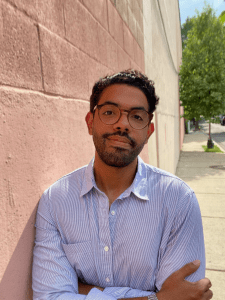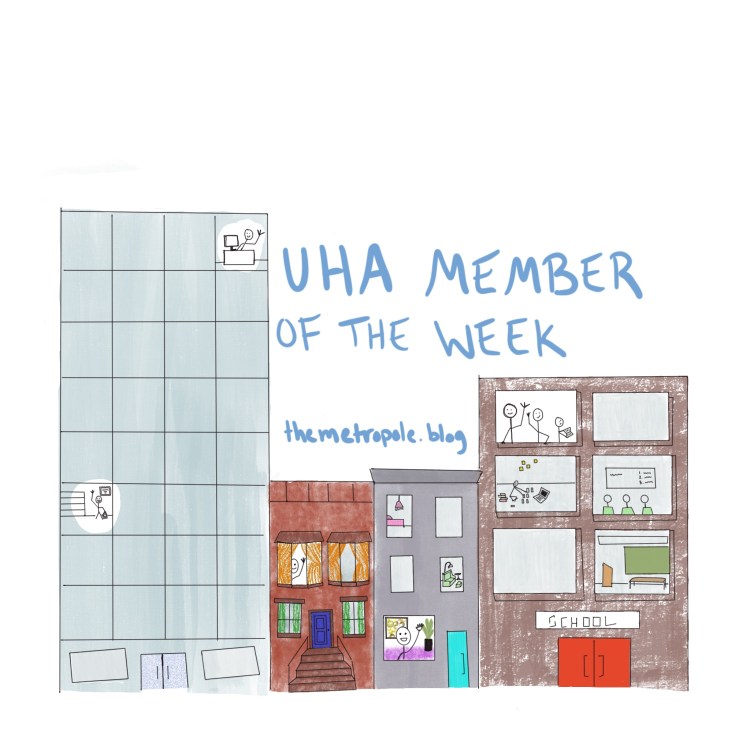
Pedro A. Regalado
Assistant Professor of History
Stanford University
Please describe your current research. What about it drew your interest?
My book project, Nueva York: Making the Modern City, explores the history of New York City’s Latinx community during the twentieth century, from the “pioneers” who arrived after World War I to the panoply of Latinx people who rebuilt the city in the wake of the 1975 fiscal crisis. My goal is to think through how various elements of the community (with respect to race, class, and nationality) experienced the city and, in turn, reorganized its space, politics, and economy. Across a range of topics, from urban renewal to the rise of Latinx bankers, US military operations in Central America to drug workers who repurposed tenement buildings, the book demonstrates how the democratic ideals of the city hinged, in large part, on the experiences of Latinx New Yorkers.
My interest in this project began with questions about the relationship between people and space. At times, this has meant tracing how Latinx New Yorkers experienced life at the scale of a single building—the bodega, the New Law tenement, the warehouse. In other moments, it has meant examining the complex relationship between their originating countries and the US. New York, home to the largest Latinx community in the country, is a fascinating place to study these scales and the contradictions that are embedded in each.
On a more personal level—I grew up in New York. When I was five years old, my family immigrated to the city from the Dominican Republic, and I’ve had questions about its social and physical landscape ever since. In graduate school, I fell in love with urban historiography. Strangely enough, despite being away from New York, I felt like urban history helped me to connect further with it. The field also introduced me to other lines of intellectual inquiry that have shaped how I think about historical change, especially work on labor and capitalism. At the same time, though the urban scholarship that I continue to hold near and dear to my heart has challenged individual and culture-focused explanations of urban decline, this scholarship still hasn’t fully explained how Latinxs transformed New York and how, in turn, its destiny became fastened to theirs. Hopefully, Nueva York can contribute to this conversation.
Describe your current public history work. How does what you are working on relate to your scholarship?
I’m currently working with Sarah Miller-Davenport and Anna Danziger Halperin on a special section of the American Historical Review that covers the hundredth anniversary exhibition of the Museum of the City of New York. The venture builds on MCNY’s foundational exhibition, New York at its Core, to consider how New York City has been variously imagined over the past hundred years in arts, media, and culture. The three of us have had the amazing opportunity to shadow MCNY curators as they have conceptualized this project. With their help, we are producing a series of essays for AHR’s “History Lab,” itself a recent experiment that seeks to reimagine the practice of history in our contemporary moment.
Unfortunately, it is not common for historians to collaborate with those outside their fields, so working with Sarah, Anna, and the folks at MCNY has been a joy. This project is also important to me because I am constantly looking for ways to relate my scholarship to the public. In the past, I’ve found that op-eds are a great way to do so, but I’m also interested in developing different modes of engagement.
What recent or forthcoming publications are you excited about, either of your own or from other scholars?
So many! I’m very excited about Mike Glass’s Cracked Foundations: Debt and Inequality in Postwar Suburbia (Penn Press), Jeannette Estruth’s The Soul of Silicon Valley: The First Fights for the Future of Big Tech, Bench Ansfield’s Born in Flames: Arson, Racial Capitalism, and the Reinsuring of the Bronx in the Late Twentieth Century (Liveright Norton), Brent Cebul’s Illusions of Progress: Business, Poverty, and Liberalism in the American Century (Penn Press), and Andrew Higgins’s Higher Education for All: Racial Inequality, Cold War Liberalism, and the California Master Plan (UNC Press). All of these are going to make essential contributions when they hit shelves.
I’m also looking forward to Yami Rodriguez’s work on Mexican Atlanta. Her book is one that the field is craving and one that is going to transform how we think about Latinx Americans and metropolitan space. Yami is likewise part of an edited volume that I am also contributing to under the guidance of the tireless Andrew Sandoval-Strausz. The book digs deep into the growing field of Latinx urban history. It features fantastic work from Llana Barber, Michael Innis-Jimenez, Gerry Cadava, Tom Sugrue, Felipe Hinojosa, Mauricio Castro, Monika Gosin, Eduardo Contreras, Sandra Enriquez, Cecilia Hill, Max Krochmal, and Becky Nicolaides.
What advice would you give to students, both undergraduate and graduate, who are interested in urban studies and just starting out their careers?
Developing confidence and asking for help are not mutually exclusive. Fall in love with the craft and refine your historical toolkit, but don’t be afraid to rely on others to get there. Build a community of colleagues and mentors who will you support you, and one that you’ll feel proud to support.



As a fellow new yorker I take pride in the city and Love what Pedro has to say. Cannot wait for the book
LikeLike